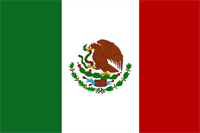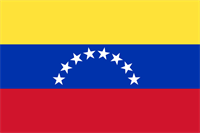In this blog we highlight 15 of the current top international markets for U.S. agricultural exports. There is plenty of export potential for U.S. suppliers heading into 2021.
In our recent live webinar, Food Export Helpline™ Counselor Dennis Lynch gave an overview of the current export outlook for U.S. suppliers. We highlight some of the information he covered in the blog below. To view the webinar in its entirety please click here.
Check out our Q & A with Food Export Helpline™ Counselor Dennis Lynch at the end of this blog!
We are all aware of the massive and ongoing effect that the COVID-19 pandemic is having on our daily lives as well as the U.S. and international economy. Some people would assume that because of all the disruptions in the world that the opportunities for exporting would be limited during this time. That simply isn’t accurate.
No matter how much an individual nation is impacted by the effects of COVID-19, the good news is that they still need to eat. Which means they need to keep the trade lines open and continue to import products. There is still plenty of economic and export potential to go around for U.S. suppliers. It might just take some new creative marketing ideas and diversifying your target markets or products to reset.
Below we highlight 15 of the current top international markets for U.S. agricultural exports. Take a look to see which markets are doing well and might be worth exploring for you!
Canada – #1 Export Market for U.S. Ag Products
FAS Profile Page – Canada
Free Trade Agreement – USMCA

Mexico – #2 Export Market for U.S. Ag Products
FAS Profile Page – Mexico
Free Trade Agreement – USMCA

China – #3 Export Market for U.S. Ag Products
FAS Profile Page – China
Free Trade Agreement – Phase One Agreement

Australia
FAS Profile Page – Australia
Free Trade Agreement – Australia

Chile
FAS Profile Page – Chile
Free Trade Agreement – Chile

Colombia
FAS Profile Page – Colombia
Free Trade Agreement – Colombia

Dominican Republic
FAS Profile Page – Dominican Republic
Free Trade Agreement – CAFTA-DR

Egypt
FAS Profile Page – Egypt

Indonesia
FAS Profile Page – Indonesia

Philippines
FAS Profile Page – Philippines

Singapore
FAS Profile Page – Singapore
Free Trade Agreement – Singapore

South Korea
FAS Profile Page – South Korea
Free Trade Agreement – KORUS

Taiwan
FAS Profile Page – Taiwan

Venezuela
FAS Profile Page – Venezuela

Vietnam
FAS Profile Page – Vietnam

Unfortunately, Venezuela is forecast to be in recession next year as well as is Pakistan, but to a much lesser extent. Other than those two, all countries are forecast to grow, some getting back most or all of what they lost in 2020! Other markets look like they will take a year or two more to recover.
Of course, these forecasts are dependent on some return to a new ‘normal’ and the ability to carry on business, travel, and entertainment as close to possible as in the past. With the unknown longevity of COVID-19 these forecasts could change in the future.
High growth markets are mostly the same as they were pre-pandemic, and they are all also top U.S. food export markets as well!
They include:

Q – Dennis what advice would you give a U.S. supplier in general for 2021 considering all the challenges that 2020 has had?
I would not count on much foreign travel or attending trade shows or most events in the U.S. But…to many travel seems to hold most their interest. Backing away from export because of a lack of travel is not in your company’s best interest. Buyers are adapting and their countries are mostly in better shape. Even if they do hold trade shows the U.S. passport may not be welcome for some time, so make the adjustments needed to continue to develop business without travel or face to face meetings.
Q – Are there any special developing markets that you would recommend suppliers to keep an eye on?
The U.S. began negotiations with Kenya on a Free Trade Agreement this summer. It might take a while but it would be only the 2nd on the continent after Morocco, and first in sub-Saharan Africa. Kenya’s medium-term prospects are positive. Assuming a gradual recovery of the global economy through 2020-21, growth should improve to 6.1% in 2021 and moderate to around 5.8% per year in 2022-2027. And although not a “developing” market it is possible the U.S. may have a trade agreement with the U.K before the end of 2021. The timing would be right and it makes perfect sense.
Q – What do you think the long-term effect of COVID-19 will be on international trade?
For the U.S., I think the worst is yet to come sorry to say, but most of the world is doing much better than us. In late October we have 4.25% of the world’s population and 20% of the fatalities, nowhere near stability. Other countries consumption patterns changed in the spring just like ours did with a lack of foodservice options and the HRI sectors we relied on for food exports cratered. They are returning now as we dine out more as well, so as their economies recover they should be importing more. Based on the data above it is not even a bad year for us, the declines are actually normal as a pattern. I would think the future of international trade will be individualized on a company and industry basis but I am quite positive we will begin to grow as the global economy does.
Your Connection To Growth®
©2024 Food Export Association of the Midwest USA and Food Export USA–Northeast. All Rights Reserved.
Food Export–Midwest and Food Export–Northeast prohibits discrimination in all its programs and activities on the basis of race, color, national origin, religion, sex, gender identity (including gender expression), sexual orientation, disability, age, marital status, familial/parental status, income derived from a public assistance program, political beliefs, reprisal or retaliation for prior civil rights activity. (Not all bases apply to all programs.) Persons with disabilities who require reasonable accommodations or alternative means of communication for program information (e.g., Braille, large print, audiotape, American Sign Language, etc.) should contact us. Additionally, program information may be made available in languages other than English.
To file a program discrimination complaint, complete the USDA Program Discrimination Complaint Form, AD-3027, found online https://www.ascr.usda.gov/filing-program-discrimination-complaint-usda-customer.
Food Export–Midwest and Food Export–Northeast reserve the right to deny services to any firm or individual which, in the sole opinion of Food Export–Midwest and Food Export–Northeast, does not comply with FAS, MAP or Food Export–Midwest and Food Export–Northeast regulations or policies, or otherwise offer the best opportunity to achieve its mission of increasing food and agricultural exports. Submission of any false or misleading information may be grounds for rejection or subsequent revocation of any application or participation. Food Export–Midwest and Food Export–Northeast are equal opportunity employers and providers.
